 |
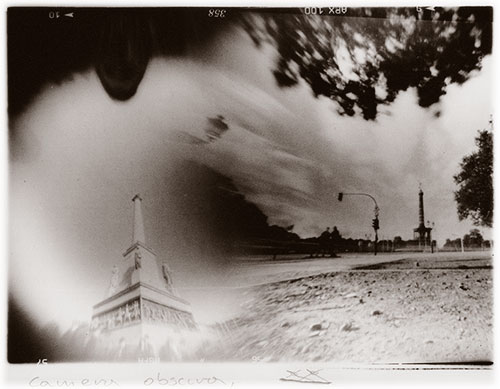 |
 |
 |
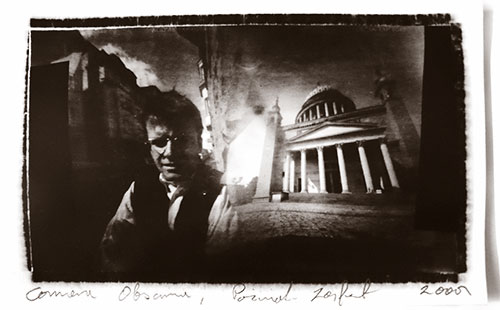 |
| In Between Reality and Image |
Strange to relate,
but wondwerfully true that even shadows have their shadows too
Shakespeare
|
| The camera obscura was invented in 1558 - it was probably Giovanni Battista della Porta who first described this phenomenon, but Leonardo da Vinci also used it (painting in perspective) and Albrecht Durer (drawing portraits). But that is not all... Roger Bacon in his Opus Maius mentions camera obscura even earlier. In the 10th century a Chinese astronomer and optician, Shen Kua, wrote about various projection devices, as well as an Arab mathematician, Al Hazen. In the 4th century Aristotle himself described a projection phenomenon that he observed when sun rays penetrated a tree-top. During the Renaissance camera obscura belonged to the basic equipment of the artist. The camera itself is a simple apparatus whose construction is based on a simple law of physics. Basic foundations: a box and a hole. The smaller the hole in the camera, the sharper the picture, but the price one pays is a less vivid projection. We have to imagine that the rays which bounce off the photographed object go through the hole and fall on a wall on which light-sensitive materiał is placed. If the plane is perpendicular to the object, an undeformed image comes into being, an image we know from modern optics. This is because the light is dispersed linearly and because there is no lens which causes the light to refract. The image from the "pinhole camera", as it is popularly called, is closer to nature and the natural dispersal of light than the image deformed by optics, like in reflex cameras. We will not delve into the calculations of lord Rayleigh and other experiments. We are not interested in the description of the whole road that leads to perfect photographs, as at this moment it would draw us away from what is most important, namely - from the image. There are many examples of the use of camera in the history of photography obscura, and making a hit list of them would be unfair. It is worth noting, however, that there is a magazine in the United States, devoted to pinhole photography, and perhaps we should also mention here mention Paolo Gioli, whose art we admire. In our project camera obscura interests us as a phenomenon, an event, not an instrument of picture production. In its presence we can relax, calm down, discover our environment and come into an intimate contact with it. It is also a kind of medium that facilitates meditation: one can stay up and awake during long exposition time and feel the waves which drift into the hole, feel their vibrations... Camera obscura: a common denominator for our work in Berlin and Stuttgart, for the exchange of thoughts and opinions, for conversations with those who want to talk or with those who have something to say, as well as for the co-existence with the environment in which one generation after another lived for centuries. Camera obscura generates, or perhaps only freezes time and space, and produces an image and a question: is it an image for everyone, or only for those who are in the know? For us the uncovering of the camera's hole is like the breath of enigma. The time of the registration of the picture on light-sensitive material causes a unique feeling, even stronger than the one which accompanies the final picture (at the exibition we also show undeveloped negatives which were exposed by the uncovering of the hole). However, the final, unique print, developed in lith technique, is equally important. Such an approach to the whole process makes us resemble artists from the end of the 19th century who looked for absolute art: but they reached for absinthe and other drugs, while as far as we are concerned, an impromptu box with a hole is enough. We are not after faster shutters or better lenses. For us the film which we use most often as light-sensitive material is the highest level of technological development. We do not have to hurry, we contemplate the pure act of creation. We do not have a problem with the acceptance of new technology and its growth, what is more alarming is the fact that we are drowning in the mounting deluge of photographs. That is why what we present at the exhibition is modest and reduced to the minimum. It allows the viewer to come into intimate and calm contact with our method. We are frugal, true, but we put a lot of energy into the act of observation itself. Our pictures, photographs and objects are a part of us and our contemplation of reality. Thanks to this process we can learn to see things from a completely different angle. Observation itself becomes a mightier undertaking. We have the impression that we are unable to see deeply and acutely, but no: we are able to see things in this way, after all. We notice our hitherto undicovered interior! The Space of Mind, filled by experiences and contemplation on account of camera obscura. We have the impression that such co-existence with a pinhole camera will cause deep, constant and most of all, positive changes in the way in which we experience surrounding reality. Which we wish to you all and to ourselves: |
Marek i Przemek
|
 |
 |
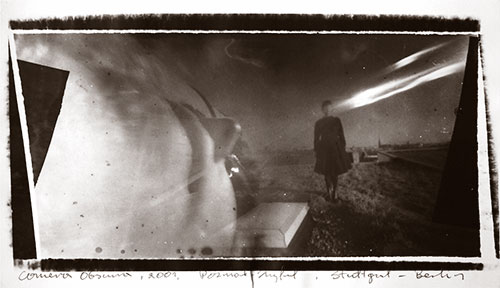 |
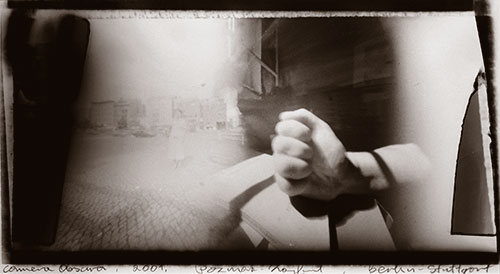 |
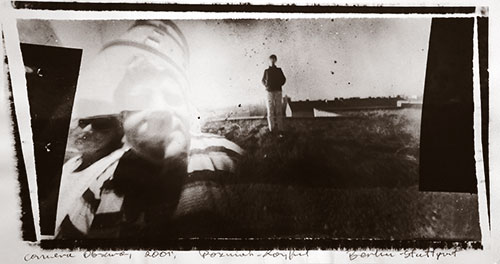 |
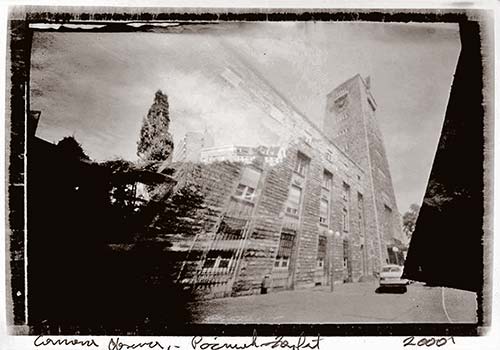 |
Copyright ©2011 Galeria FF ŁDK, Marek Poźniak, Przemek Zajfert |